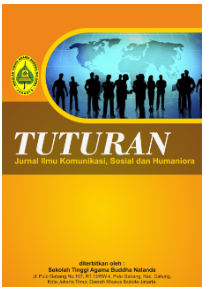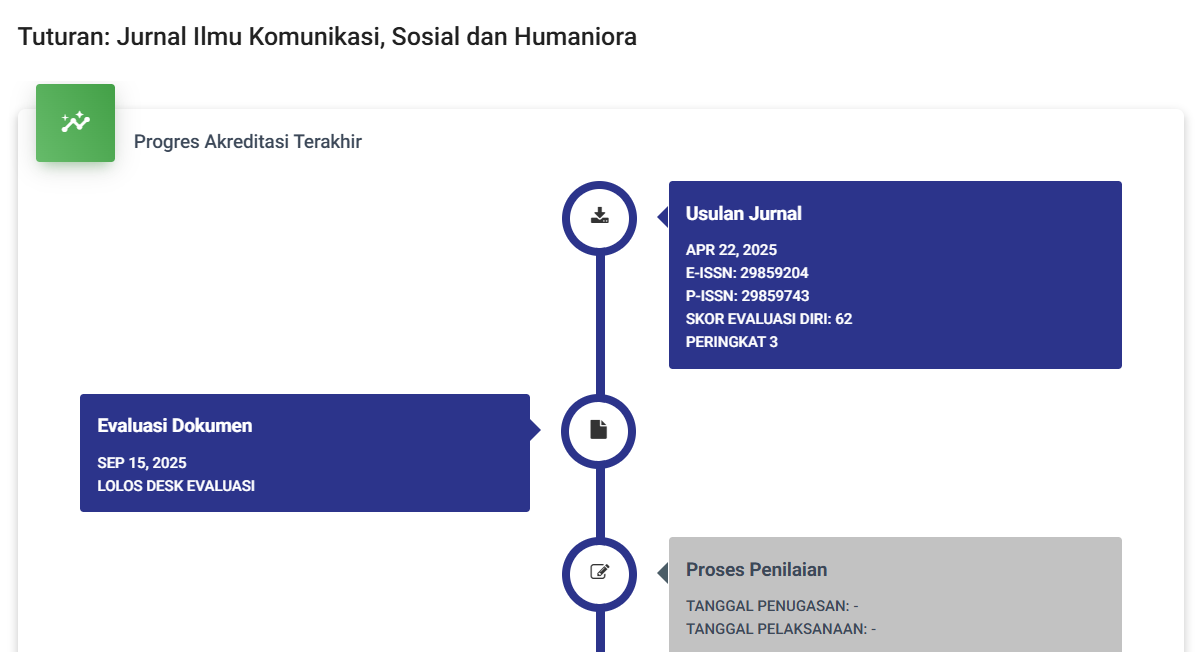Komunikasi Lintas Budaya di Era Digital sebagai Strategi Mengurangi Stereotip terhadap Masyarakat Madura
DOI:
https://doi.org/10.47861/tuturan.v3i2.1808Keywords:
cross-cultural-communcation, stereotypes, digital-media, maduraAbstract
This study explores how cross-cultural communication in the digital era can serve as a strategy to reduce negative stereotypes against the Madurese community. Stereotypes portraying Madurese people as harsh or aggressive often circulate in digital spaces, reinforcing unfounded prejudices. Using a descriptive qualitative approach, this research involved interviews with ten informants, five Madurese individuals and five non-Madurese individuals who actively use digital media. The findings indicate that digital platforms can serve as effective spaces for fostering intercultural dialogue, offering more accurate representations of Madurese cultural values, and minimizing misunderstandings through digital cultural literacy. However, without proper management, digital media may also amplify harmful stereotypes. Therefore, cross-cultural communication strategies grounded in education, open dialogue, and government-supported policies are essential to cultivating inclusive digital spaces and promoting fairer intercultural understanding. This research highlights the importance of using digital communication to bridge cultural divides and address bias, especially in a diverse and multicultural society like Indonesia.
References
Abdullah, T., & Brown, T. L. (2011). Mental illness stigma and ethnocultural beliefs, values, and norms: An integrative review. Clinical Psychology Review, 31(6), 934–948. https://doi.org/10.1016/j.cpr.2011.05.003
Anista, R. (2023). Transformasi kebudayaan: Dampak perkembangan teknologi dan media sosial. Jurnal Pendidikan Sosial Indonesia, 1(1), 35–43.
Arumita, P. (2023). Analysis of cross-cultural communication using the DEMATEL method. Contemporaneity of Language and Literature in the Robotized Millennium, 5(1), 16–27.
Bilotserkovets, M., Fomenko, T., Krekoten, O., Berestok, O., Klochkova, T., & Lushchyk, Y. (2023). Challenges and strategies for intercultural communication: A case study on national and gender stereotypes in postmodern women literature. Amazonia Investiga, 12(64), 73–82.
Hampton, G. J. (2015). Imagining slaves and robots in literature, film, and popular culture: Reinventing yesterday’s slave with tomorrow’s robot. Lexington Books.
Kim, W., Guan, X., & Park, H. S. (2012). Face and facework: A cross-cultural comparison of managing politeness norms in US and Korea. International Journal of Communication, 6, 19.
Liliweri, A. (2005). Prasangka dan konflik: Komunikasi lintas budaya masyarakat multikultur. LKiS Pelangi Aksara.
Loots, E. (2024). Globalisation and changing patterns in global capital flows. In Economic shocks and globalisation (pp. 49–74). Routledge.
Muhtarom, D. A., Siswanto, N. D., Amri, U., & Alim, A. (2024). Suplemen toleransi pada materi bahan ajar pendidikan agama Islam dan budi pekerti untuk sekolah menengah pertama. Academy of Education Journal, 15(1), 666–679.
Mumtaz, N. F., Widiyanarti, T., Pratiwi, E. E., Deswita, D., Purwanto, E., & Rahmah, A. (2024). Strategi komunikasi lintas budaya. Indonesian Culture and Religion Issues, 1(4), 6.
Putra, E. A., Khairiah, A. S., Rahman, A., Taskiyah, E., Aqmar, F. R., & Kamila, L. S. (2024). Peran media dalam meningkatkan pemahaman komunikasi antar budaya. Indonesian Culture and Religion Issues, 1(4), 10.
Ramadani, N., Widiyanarti, T., Fauziah, A., Salsabila, R. M., Firmansyah, I., Pratiwi, A., & Sagita, D. N. (2024). Menguraikan tantangan yang disebabkan oleh stereotip budaya dalam komunikasi antarbudaya. Interaction Communication Studies Journal, 1(3), 16.
Rifai, M. A. (2007). Manusia Madura: Pembawaan, perilaku, etos kerja, penampilan, dan pandangan hidupnya seperti dicitrakan peribahasanya. (No publisher).
Suryandari, N. (2019). Stereotipe budaya: Faktor krusial pengembangan wisata Madura. In I. N. Azhar & Surokim (Eds.), Madura 2040: Masalah dan strategi pengembangan pariwisata Madura (pp. 18–28). Inteligensia Media.
Suryandari, N. (2020). Role of stereotyping in intercultural communication. Journal of Humanities and Social Science, 25(1), 24–30.
Suryandari, N. (2021). Dampak media baru dan komunikasi antarbudaya dalam konteks global. Jurnal Sosioteknologi, 20(3), 362–372.
Tubbs, S., Moss, S., & Papastefanou, N. (2012). EBOOK: Human communication: South African edition. McGraw Hill.
Widiyanarti, T., Syahrani, R. H., Fadhilah, N., Adawiyyah, N., Setiawaty, S. H., & Putri, A. O. A. (2024). Tantangan dan inovasi dalam komunikasi antar budaya di era globalisasi. Interaction Communication Studies Journal, 1(3), 24.
Zain, Z., Prabamukti, A. A., & Wardhani, I. K. W. (2024). Analisis konflik antarbudaya pada media sosial. Prosiding Seminar Nasional Ilmu Ilmu Sosial (SNIIS), 3, 655–661.
Downloads
Published
How to Cite
Issue
Section
License
Copyright (c) 2025 TUTURAN: Jurnal Ilmu Komunikasi, Sosial dan Humaniora

This work is licensed under a Creative Commons Attribution-ShareAlike 4.0 International License.








